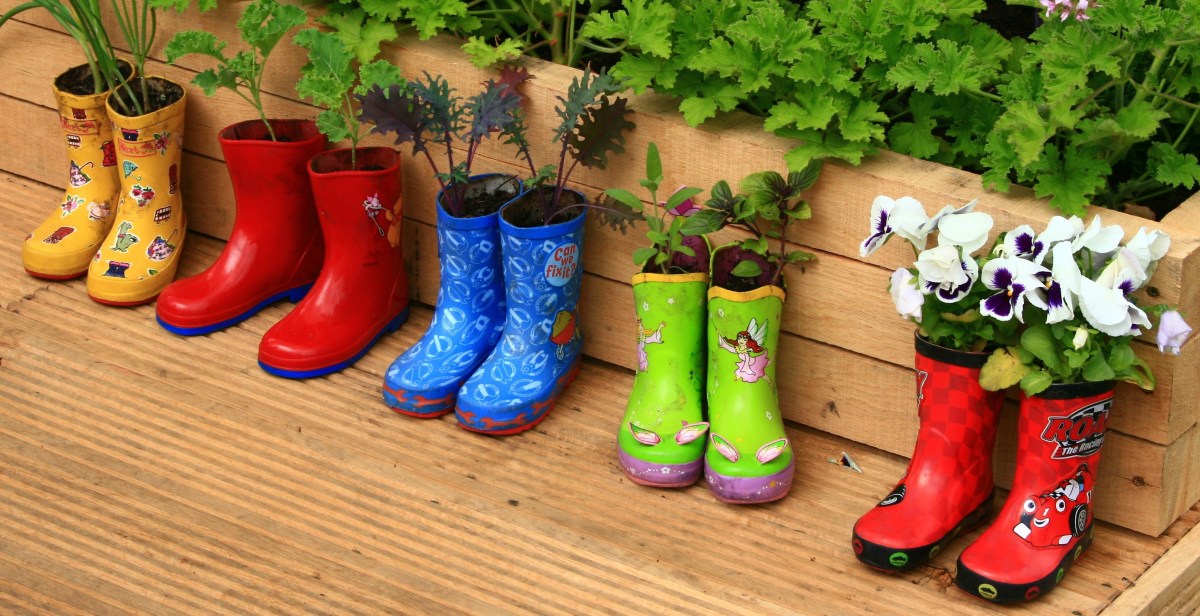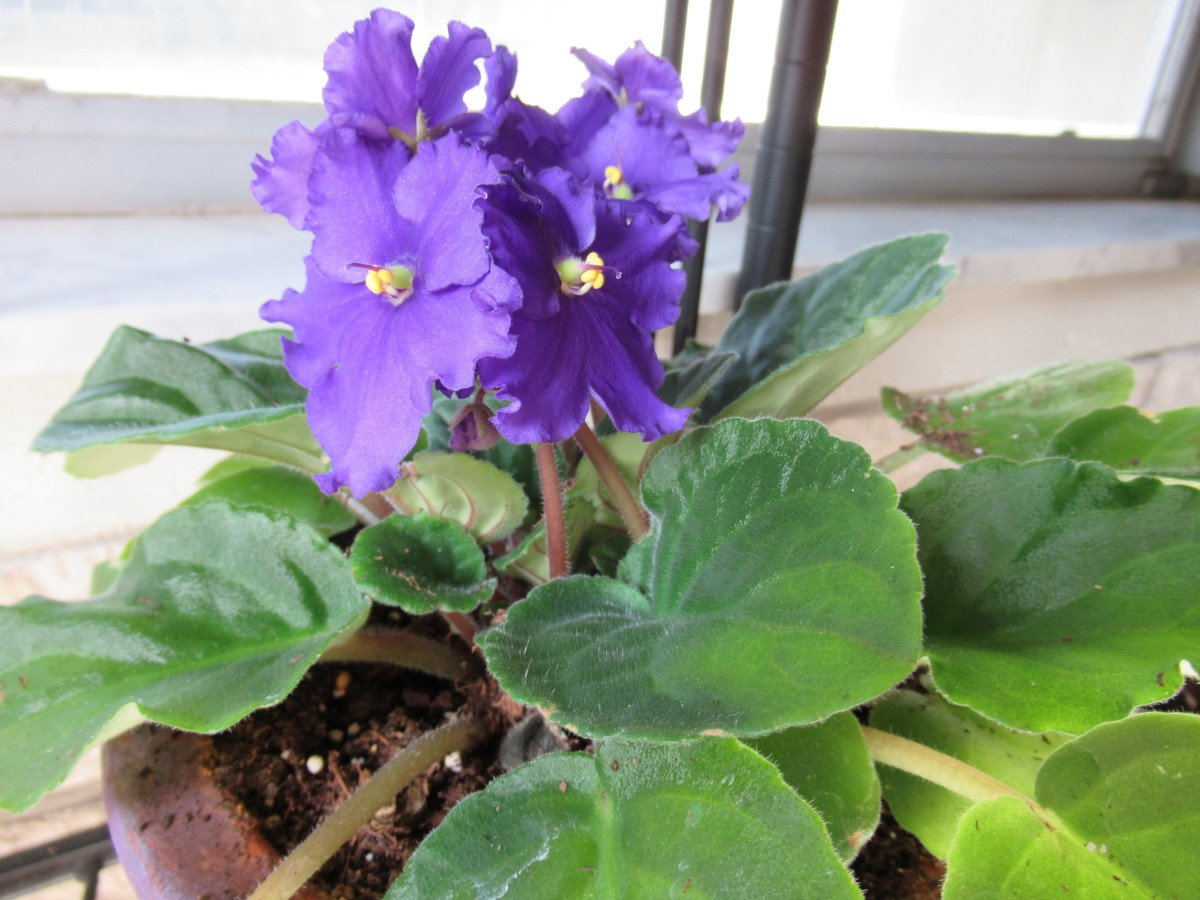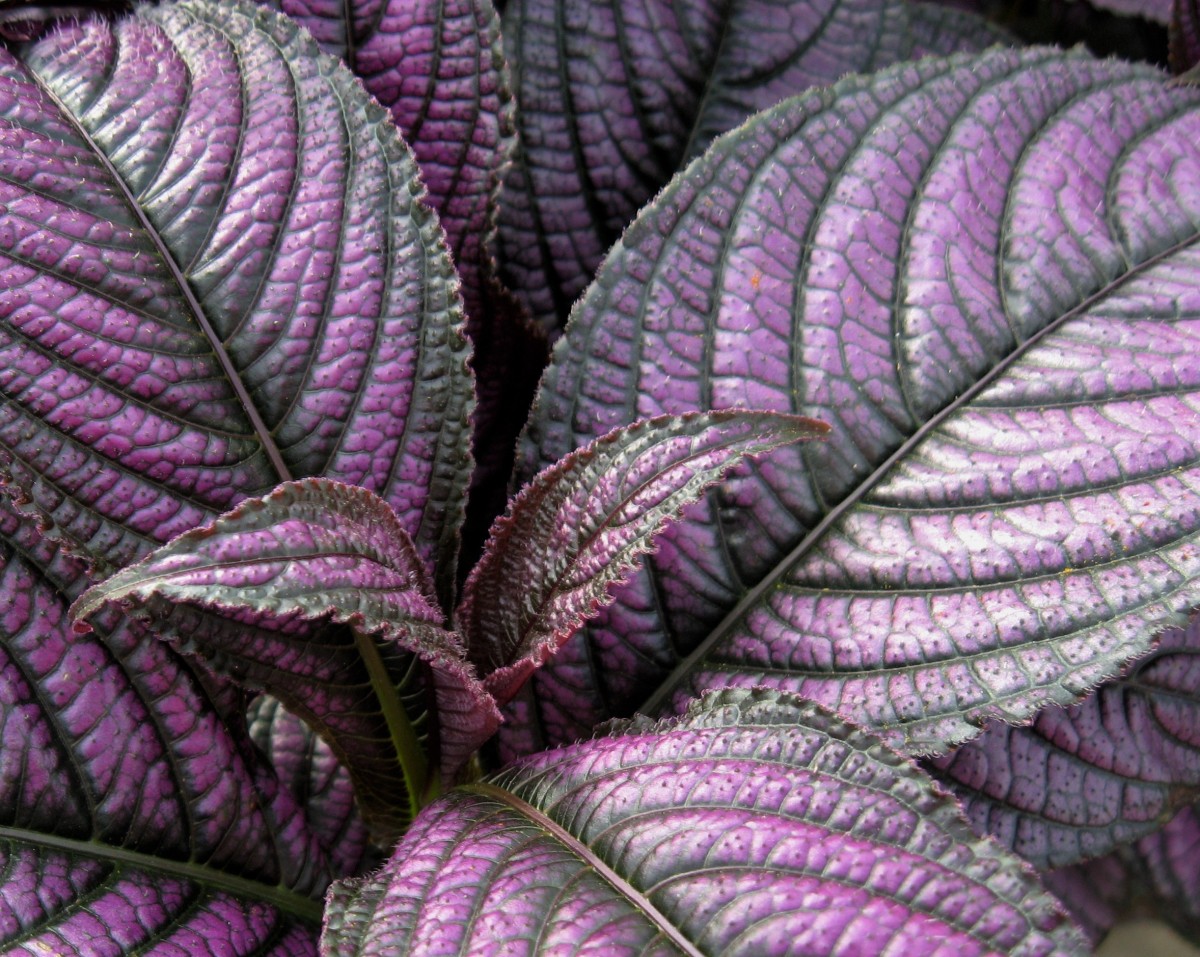Container Water Gardening: Planting Lily Pool
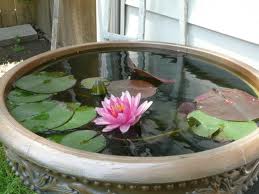
A miniature lily pool can be made in a pot, earthen, wooden or of cement concrete. Such pots having a diameter of 60 centimeters and above can be used. Wooden vats which are used as containers in the chemical and food processing industries can also be used for this purpose. Red wood is rot proof and termite repellant. Hence very suitable for making vats. The large earthen pots of tumbler shape are extremely suitable for this purpose. Sinks or movable cement cisterns are also considered to be useful.
Obviously the pots to be used for container water garden must not have the drain hole. The post should have the soil layer of 20 cm deep at the bottom. The exceptionally large pots should have deeper layers proportionately. A heavy potting compost can be used with advantage.
For planting, dormant roots (rhizomes) are very suitable. In winter, dormant roots are available in ponds and marshes. For container gardens or pot pools, small varieties of lilies are selected. The larger varieties will also do and produce small flowers but will yield fewer flowers. One can find fantastic garden varieties, a few such varieties from an Italian nursery (Imbiflor, Tommaso, Inarzo) are noted below:
- Ninfee disidratate
- Dishyrated water lily
- Nymphees dishydrates
- Dishydratierte seerosen
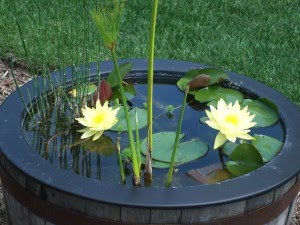
For gardens, those varieties which bloom in the morning, are preferable. For better results, feed supplements have to be added to the container soil at an interval of two months from February to September. Mix loam, humus and a balanced mixture of fertilizers (5:2:1) intimately. Then get the mix moistened, to mould a ball shaped mass of about 250 grams each. Then get the balls dried in shade. You can preserve them for a year or so. Plant one or two of them in the mud of the pot for feeding the lilies.
The lilies are propagated by roots or seeds. The seed pods ripen in winter. Collect and preserve them over winter. The seeds can be sown from March to June. Get a container half filled will a potting compost. Sow the seed as usual on the compost. Cover the seeds by sprinkling the same compost which should make a uniform layer of 3-5 mm. until the plantlets grow, maintain water of 10 mm deep over the surface of the compost. Then the depth of water will be increased gradually as necessitated.




